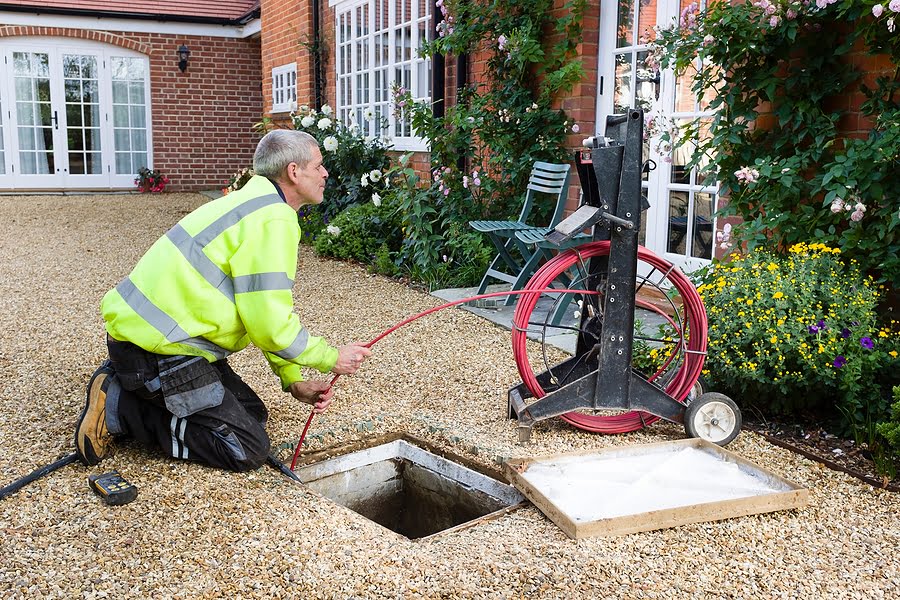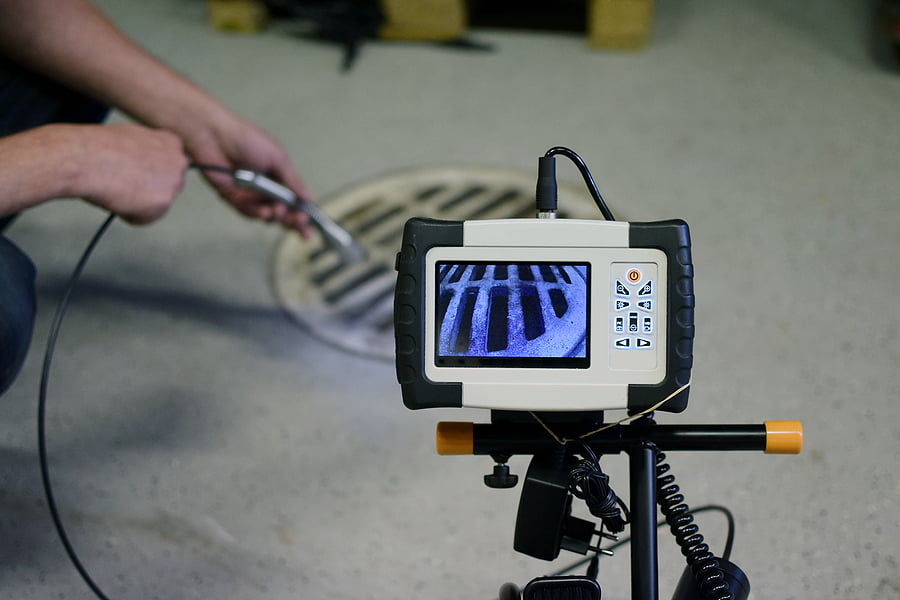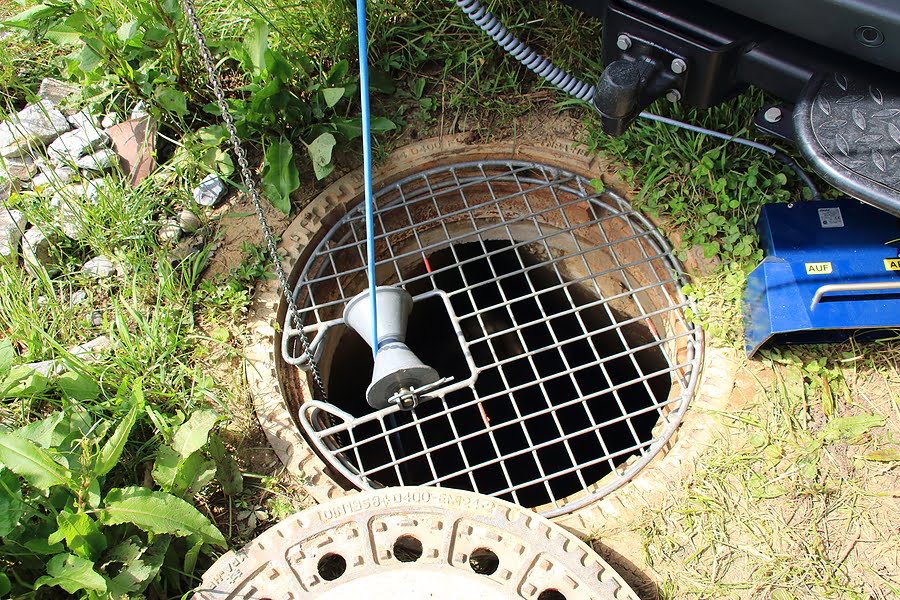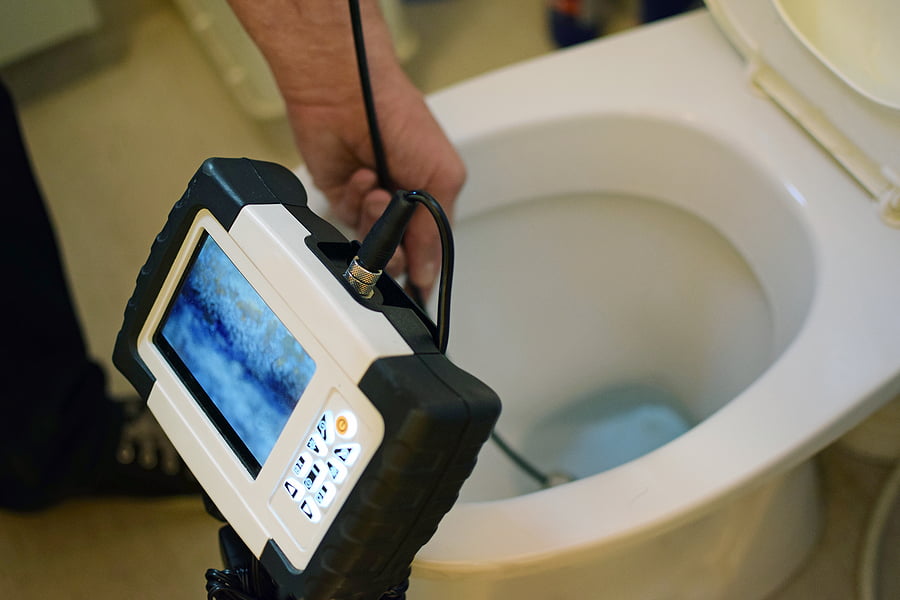
A sewer line inspection uses a tiny waterproof video camera to examine the underground plumbing conditions. This camera is attached to a flexible cable, which slowly gets inserted into your sewage system. The camera can move through pipes encased in concrete, pipes behind walls, and pipes underneath your home’s foundation. The video footage appears on a separate screen, allowing the plumber to observe and uncover issues with the underground pipes.
Sewer line problems can be challenging to identify due to the lack of visibility. You can’t see a sewer line like other parts of a home’s plumbing system. The sewer line’s pipes are buried underground and embedded in a property’s foundation. Your sewage system relies on these pipes, but a plumber can’t inspect areas so deep without assistance. A sewer line inspection is the only way to diagnose the issues accurately.
A sewer line camera inspection is a quick and easy procedure. Think of it as a method to confirm the health of your plumbing, offering a detailed view of the underground conditions. The plumbers can use the video footage to assess the entire sewer line quickly and efficiently. They may catch issues that wouldn’t be visible otherwise.
Let’s learn more about sewer line inspection, how it works, and the benefits for homeowners.
How a Sewer Camera Inspection Works

During the inspection, a camera is gently pushed down the sewer line on the end of a hose. It can navigate carefully through pipes, joints, and other obstructions. The video footage reveals potential damages to the underground plumbing system. After the inspection, the plumber retracts the camera and formulates a plan to address issues found in the sewage system.
The sewer line camera inspection may reveal the following problems:
- There are broken, collapsed, or cracked pipes that need replacement. You may also find leaking joints or misaligned pipes that disrupt the sewer system flow.
- Your sewer line has blockages caused by substances like limescale or grease. These buildups can lead to deterioration or pipe corrosion over time.
- Tree roots may have infiltrated a pipe, causing a crack or obstruction in the sewer system. It can be an expensive fix if you don’t address the problem urgently.
- You may notice sewer line damages from a recent home renovation project, such as a deck installation. The contractors may have inadvertently damaged the underground pipes during construction.
Since sewer line problems occur underground, they lack visibility and often go unnoticed by homeowners. Your sewer line risks long-term damages unless you diagnose the system thoroughly. A sewer line camera inspection allows plumbers to identify any issues, determine the origins, and assess the severity. Then, the plumbing experts can recommend the best actions to fix your sewer line.
Sewer Line Inspection for Old Homes

A sewer line inspection is best suited for assessing old homes. Any home over 20 years old is in a high-risk category for plumbing problems, necessitating a thorough examination. Some old houses built in the 1940s or 1950s have Orangeburg pipes. They are made from tar paper and pressed wood as a low-cost alternative to metal pipes. Since these pipes can deteriorate quickly, a sewer line inspection can determine if there’s a failure and where it occurs.
Is your home built before the installation of the existing city sewer line? If so, you may be a good candidate for a sewer line inspection. The check-up ensures your sewage piping connects correctly and maintains its durability. Similarly, a sewer line inspection is helpful when you want to buy an old home to avoid costly repairs. You may also be an existing property owner who wishes to renovate. In either case, examine your sewer line thoroughly to confirm there aren’t unexpected issues.
Signs of Sewer Line Problems

Schedule a sewer line inspection if you notice erratic behaviour in your plumbing. Recurring issues with drains, pipes, toilets, sinks and other fixtures signify potential blockages in the sewer system. A minor clog can escalate and become costly to fix over days, weeks, or even months. The earlier you address the sewage line problems, the less expensive they are to repair.
Here are the common signs of sewer line problems:
Sign #1: Sewage Backup
Sewage backup doesn’t happen randomly. Your plumbing system must have a blockage somewhere, preventing the waste from flowing in the correct direction. You may notice a correlation between where the sewage backup occurs. For example, a blocked toilet may lead to sewage backing up in the kitchen sink. If so, that demonstrates the blockage isn’t associated with one location. Instead, the sewer line may be faulty, causing issues with the rest of the household plumbing.
Sign #2: Clogged Toilet
Sewage backup can cause toilets to malfunction. Typically, the problem grows in stages. First, you may notice your toilet not flushing correctly, even though there aren’t any broken parts. Then, you’ll experience regular clogs that are difficult to clear away. Another symptom is if you notice bubbles after flushing a toilet. These air bubbles may indicate a problem farther into the plumbing lines.
Sign #3: Smelly Drains
You may notice a foul odour near multiple drains, resembling a sewage smell. One stinky drain may be an isolated problem within a specific plumbing fixture. However, numerous smelly drains suggest a common denominator that affects your entire household. Often, the root cause of the stench comes from the sewage system. Get a sewer line camera inspection for a detailed examination.


